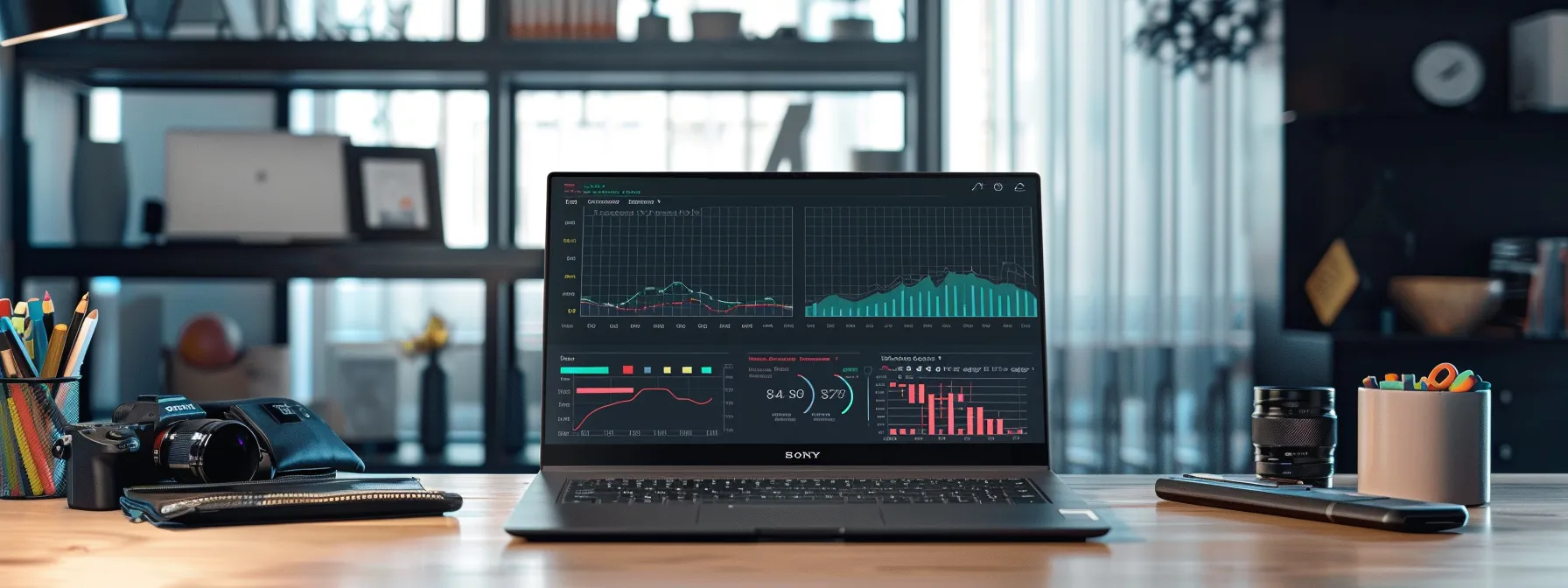What is the Battery Memory Effect?
Does the battery memory effect really matter in today’s devices? This article questions a common belief by examining the true memory effect of batteries and the factors that influence battery performance. It also compares different battery technologies to help business owners make informed choices for their office equipment. Readers will benefit from practical tips for maximizing battery life and clarifications on popular misconceptions. This overview provides clear guidance, addressing concerns that affect purchasing and maintenance decisions.
Key Takeaways
- Proper battery cycle management minimizes perceived memory effect
- Certified charging protocols extend battery lifespan
- Accurate monitoring of charge cycles helps maintain device efficiency
- Temperature control is crucial for battery performance stability
- Managing both lithium-ion and nickel-based batteries improves overall reliability
True Memory Effect of Batteries

This section explains the genuine memory effect in batteries by detailing the scientific explanation behind polymer and lithium iron phosphate responses and the role of a battery management system. It clarifies common misunderstandings in laptop and phosphate battery use while highlighting key indicators of memory effect.
Scientific Explanation of Battery Memory
The scientific explanation for battery memory centers on the charge cycle and chemical behavior within the cell, where repeated partial discharge and recharge cycles can lead to a reduced capacity over time. Researchers have identified that factors like the management of charge cycles and inherent material properties, such as those seen in lfp chemistry, play a role in this effect.
Practical examples in satellite and industrial applications show that rigorous management of the charge cycle helps minimize unwanted memory effects. Experts note that maintaining proper lead times in replacement and calibration protocols, especially in systems using lfp, ensures better overall performance and longevity of the battery.
Common Misunderstandings
The notion that all batteries exhibit a reduced capacity curve due to the memory effect is a phenomenon misinterpreted by many. Research from the paul scherrer institute confirms that such effects mainly arise from mismanagement of charge cycles rather than inherent flaws within the cell structure, and smart battery systems clearly show no persistent memory issue when handled correctly.
Some experts mistakenly attribute capacity loss solely to the memory effect, overlooking the chemical behavior of the cell. Insights from practical applications indicate that a smart battery and careful cycle management significantly mitigate any perceived curve in capacity, clarifying that the reported phenomenon is often overstated.
Key Indicators of Memory Effect
The behavior of a lithium iron phosphate battery can be closely monitored by examining the performance of its cells during partial charge cycles. Observing how the electrolyte reacts and how electrons move throughout the battery provides clear insight into any emerging indicators of memory effect.
Analysis of charge patterns in cells reveals that frequent partial charges correlate with subtle capacity shifts. Practical monitoring of electron behavior within the electrolyte confirms that proper cycle management can significantly reduce distortion in battery performance.
Factors Contributing to Battery Performance

Charge cycles, temperature fluctuations, and discharge depth are key factors affecting battery performance. The integrity of the cathode in a lithium or lithium polymer battery relies on how efficiently a charge is maintained. This section offers internet-based insights, focusing on charge cycles and temperature influences, and examines how discharge depth impacts overall battery efficiency.
Charge Cycles and Their Role
Charge cycles play a decisive role in battery performance by influencing the eventual memory effect. Manufacturers and users of mobile phone batteries and electric vehicle power systems must rely on accurate data to optimize cycle management and monitor subtle shifts in iron-based components:
Understanding charge cycles helps experts adjust protocols to reduce memory effect in various applications. Data gathered from routine monitoring of mobile phone and electric vehicle batteries reveals clear patterns, ensuring equipment performance aligns with professional standards.
Temperature Effects on Battery Health
Temperature directly influences battery performance by affecting chemical reactions within cells, including those found in alkaline battery technology and ion-based systems. Elevated temperatures may boost energy output in short bursts, but prolonged exposure can compromise battery integrity, similar to the challenges seen in hydride-powered devices and even in typical telephone energy supplies.
Professional observations reveal that maintaining optimal temperature conditions extends battery life and preserves performance, while deviations can induce capacity shifts commonly mistaken for memory effects. Consistent temperature management minimizes undue stress on ion and hydride components, ensuring steady energy performance in both mobile and industrial applications.
The Impact of Discharge Depth
Discharge depth significantly influences the electrochemistry of a rechargeable battery, affecting the behavior of its cells during energy draw. Practical insights suggest that controlled discharge limits the risk of a short circuit, ensuring stable performance and efficient energy storage, with tools like javascript used to simulate and monitor battery behavior.
Experts note that monitoring discharge depth is essential for prolonging battery life and preserving cell integrity. Real-world applications show that careful management of energy cycles and simple programming scripts in javascript can aid in preventing unexpected short circuits and maintaining optimal performance.
Comparing Battery Technologies

Examining nickel-cadmium and lithium-ion battery technology reveals distinct memory behaviors and performance. Key discussions address nickel versus cadmium systems, their crystal structure influences, and associated advantages and drawbacks, along with future trends shaping these battery types. This analysis provides practical insights into battery memory effect management and overall efficiency.
Nickel-Cadmium vs. Lithium-Ion Batteries
The differences between nickel-cadmium and lithium-ion batteries are rooted in their distinct chemistry and crystal structures. Nickel-cadmium battery packs often show variations in state of charge management compared to lithium-ion systems, with the former sometimes displaying subtle hydrogen-related imbalances during extended use.
Practical testing confirms that the inherent chemistry of lithium-ion batteries provides consistent performance and improved cycle reliability in battery pack applications. Expert evaluations indicate that monitoring the state of charge and crystal consistency in lithium-ion systems offers a more stable energy output with fewer hydrogen-related fluctuations.
Advantages and Drawbacks of Each Type
Battery types show distinct advantages based on their inherent physical properties. Lithium-ion systems offer consistent performance due to stable electrode structures, while nickel-cadmium systems present challenges in managing the electrode and anode processes that can lead to increased heat during operation:
Industry experts emphasize that a careful balance between the materials used in the electrode and anode is key for optimal battery performance. Practical insights indicate that while certain systems may be more economical in advertising, managing heat remains a core concern that affects overall reliability and usage in various applications.
Future Trends in Battery Technology
Industry specialists project that battery technology will continue evolving, with new materials and refined charge protocols showing promising improvements in mitigating memory effects. The focus is on implementing smarter battery management systems that blend advanced sensors with real-time data monitoring to optimize performance and extend lifespan.
Experts highlight that research investments are driving progress in lithium-based and alternative energy storage systems, helping to address efficiency and longevity issues in various applications. The direction of technological advancements aims to deliver reliable, cost-effective solutions that meet the demands of modern business environments.
Practical Tips for Maximizing Battery Life

This section provides best charging practices, outlines how to avoid common mistakes, and explains how to recognize signs of degrading performance. It delivers professional insights into battery memory effect management, ensuring businesses and professionals learn practical tips to maintain battery efficiency and extend lifespan effectively.
Best Charging Practices
Best charging practices reduce battery degradation by ensuring that charge cycles are consistent and managed effectively. Research shows that following a set schedule for charging can minimize capacity loss and steady performance:
- Charge at moderate levels instead of full depletion
- Use certified charging equipment for stability
- Monitor ambient temperature during charging
The proper use of charging protocols results in maintaining battery health and extending product life. Experts recommend reviewing manufacturer guidelines regularly to align practices with real-time feedback and operational requirements.
Avoiding Common Mistakes
Avoiding mistakes when managing battery cycles is vital for reducing capacity loss and sustaining long-term performance. The office equipment supplier expert advises that businesses routinely check charging practices and verify compliance with manufacturer guidelines to limit degradation and avoid memory effect misinterpretations.
Experts recommend steering clear of complete discharges and overcharging to preserve battery health. Careful monitoring and consistent, measured charge cycles assist in preventing operational issues that can shorten battery life and affect overall efficiency in managed IT environments.
Recognizing Signs of Degrading Performance
The expert observes that a noticeable decline in battery capacity and slower charging rates are among the first signs of degrading performance. Routine monitoring of charge cycles helps identify these issues early, allowing for timely adjustments that protect battery life.
Industry professionals recommend keeping an eye on irregular temperature changes and unexpected power fluctuations as clear signals of battery wear. Such practical insights enable users to maintain efficiency and extend the life of their managed IT and office equipment.
Debunking Common Myths

The expert clarifies misconceptions about battery life. Misbeliefs such as fully draining to boost longevity, memory effect affecting only nickel-based batteries, and regular cycling being beneficial are addressed here. Detailed insights explain why these ideas do not hold, offering practical data to help businesses use office equipment more efficiently and maintain robust performance in demanding environments.
Myth: Fully Draining a Battery Improves Life
The expert clarifies that fully depleting a battery does not extend its lifespan and instead contributes to capacity loss over time. Practical observations from long-term equipment management show that consistent charging cycles help maintain optimal performance and prevent issues associated with deep discharges.
Industry experience demonstrates that proper cycle management supports battery efficiency and durability without relying on complete depletion. Data-backed insights reveal that measured charging protocols are more effective for preserving battery health in managed IT environments and office equipment settings.
Myth: Memory Effect Only Affects Nickel-Based Batteries
The expert asserts that battery memory issues are not exclusive to nickel-based batteries. Controlled experiments and real-world examples reveal that lithium-ion and other battery types can display capacity changes resulting from improper cycle management.
The expert recommends proper management for all battery types to prevent misunderstanding about memory effects:
- Regular monitoring of charge cycles
- Utilizing certified battery management systems
- Following manufacturer guidelines for charging protocols
Myth: Regularly Cycling Batteries Is Beneficial
Industry experts note that repeatedly cycling batteries does not yield the expected benefits and may instead contribute to unnecessary wear on the cells:
Studies from office equipment specialists reveal that improper charging routines can lead to diminished performance, prompting professionals to advocate for controlled charging practices rather than regular cycling to ensure optimal battery operation in managed IT settings.
Resources for Further Understanding

This section covers recommended articles and studies on battery behavior, expert opinions on battery technology, and online communities offering discussion. Each category provides practical guidelines to support effective battery cycle management and improve efficiency in office equipment use. These resources offer valuable, data-driven insights tailored to the professional needs of business owners.
Recommended Articles and Studies
Industry professionals can access a curated selection of articles and studies that address battery memory and capacity changes with practical insights from long-term equipment management. These resources blend real-world examples with detailed research on charge cycles and lithium-based systems to assist business owners in understanding battery behavior and mitigating performance issues.
Scholarly articles and expert reports provide actionable data and operational tips for managing battery cycles in managed IT environments and office equipment. These studies offer clear analysis and proof points that help professionals make informed decisions when integrating battery management strategies into their daily operations.
Expert Opinions on Battery Technology
Expert opinions on battery technology reveal that proper cycle management and smart battery management systems significantly improve overall performance. Industry professionals offer practical insights based on decades of experience in managing IT services and office equipment, guiding business owners to adopt effective strategies that counter the battery memory effect.
Specialists emphasize that careful monitoring and adherence to manufacturer guidelines play essential roles in preserving battery capacity and efficiency. They provide actionable insights based on long-term testing and on-site examples:
Online Communities and Forums for Discussion
Online communities and forums provide a valuable space for business owners to discuss battery memory effect management and share practical examples of handling office equipment challenges. These platforms allow professionals to exchange firsthand expertise, identify best charging practices, and address issues related to managed IT services and efficient device performance:
- Real-time problem-solving discussions
- Peer advice on battery cycle management
- Updates on latest industry practices
These interactive hubs offer concise, actionable insights and facilitate a deeper understanding of battery performance issues, making them an essential resource for those managing IT services and office equipment. They serve as supportive channels for resolving concerns and achieving operational efficiency through shared expertise.
Conclusion
Understanding battery memory effect is crucial for managing office equipment and IT services effectively. The analysis clarifies that actual capacity loss results mainly from poor cycle management rather than an inherent battery flaw. Practical insights show that consistent charging practices and temperature control help maintain battery longevity. Business owners benefit by applying these findings to improve device performance and minimize operational disruptions.
What is the battery memory effect?
Battery memory effect is a condition where rechargeable batteries show reduced energy capacity because they are not fully discharged before recharging.
What factors affect battery performance?
Battery performance relies on factors such as temperature, charge cycles, device age, and usage patterns, which affect power retention and overall efficiency.
How do battery technologies differ?
Modern battery technologies vary in energy density, operational lifespan, and safety features, affecting their applicability in office equipment and managed IT services for businesses.
What tips help maximize battery life?
Lower screen brightness, disable unused features, and close background applications. Regularly update firmware, maintain moderate temperatures, and activate power-saving modes to help maintain optimal battery performance.
What common myths exist about batteries?
Some misconceptions arise regarding battery performance; many assume all batteries share equal longevity and dismiss effects of temperature or charge cycles, while others overestimate inherent capacity versus real performance.











